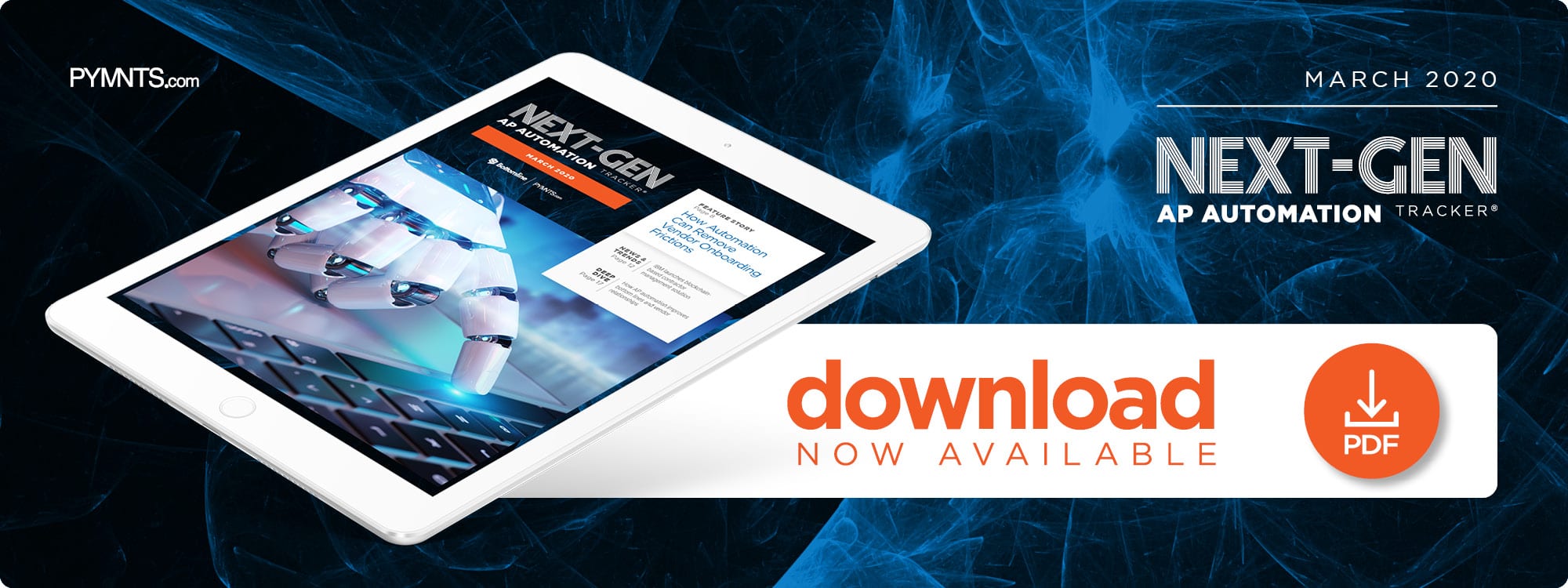How Automation Can Remove Vendor Onboarding Frictions

Businesses interested in expanding globally must not only juggle outgoing payments to vendors, but also cater to individual complex payment agreements. Legacy accounts payable (AP) systems, make that hard, Dan Miller, senior vice president at financial software provider Sage Intacct told PYMNTS. In the latest Next-Gen AP Automation Tracker, Miller explains why cloud-based AP is make or break.
The financial account software market is on pace to reach $19 billion in sales over the next five years, and such growth is necessary to match businesses’ fast-paced needs. Firms of all sizes are searching for tools that provide better insights into their cash flows, as such knowledge is critical to helping them maintain solid relationships with both vendors and customers — especially amid intensifying competition.
Growth can create frictions, too. Some businesses must juggle outgoing payments to vendors in international markets, for example, or cater to others’ more complex payment agreements. Easy, efficient accounts payable (AP) technology can instantly categorize these transfers, and businesses can upgrade their financial management with automation and cloud implementations to create lasting — and more financially viable — vendor relationships, said Dan Miller, senior vice president of product management at financial software provider Sage Intacct. Such technology can also help companies keep up with competitors by eliminating frictions throughout the AP process involving onboarding vendors and tracking payments.
“We have solutions — both natively [as well as via partner] products — for helping new vendors or helping with vendor [onboarding],” Miller told PYMNTS during a recent interview. “There is a real value in bringing [these solutions] together at the vendor onboarding stage [because it] saves a lot of time in figuring out how that vendor relationship is going to be structured. You bring in new vendors [and] you need to be sure how that vendor [is] expecting to be paid.”
Handling onboarding with a one-step solution also gives businesses better understandings of their cash flows, allowing them to leverage additional solutions or innovate their in-house processes.
Data’s Importance In One-step Onboarding
Boiling the entire onboarding process down to one step is not easy, however. Businesses and their suppliers encounter massive amounts of data each day, meaning both parties must receive information in a timely and easy-to-understand manner. Such details must be quickly analyzed when onboarding vendors.
“There are some standards under which companies tend to want to operate and [that order] how they want to engage with each other, but there are also a lot of variations in expectations of individual vendors,” Miller clarified. “[There are] some circumstances [in how] a customer-vendor relationship is set up [that] drives how payments get [managed]. Because of that variation, there is work [needed] to make sure you build it into the system so that [it] gets [to] where the data collection [is] really important [and where] the AP staff is going to actually pay bills.”
Businesses must be able to understand these variations when they begin onboarding, he added, so Sage Intacct has also built automation into its onboarding solutions. Providing AP automation and enterprise resource planning (ERP) solutions in one product allows businesses to streamline the process and more easily move forward with trusted vendors. Data is essential to this process, Miller said, which must be tailored to each individual client.
“I do not think when you get to mid-market [size] … [that] the one-size-fits-all [model] works,” he noted. “When you are dealing with potentially hundreds of vendors the odds of you having a one-size-fits-all relationship with each of them? … [That] really means manual work for the AP team.”
Cash flow and AP automation innovation
Sage Intacct has worked to create solutions — including its Sage Intacct Intelligent General Ledger as well as products it developed with partner companies — that can capture this information upfront and add support for AP automation and other tailored tools, Miller said. Solutions are then personalized to address clients’ needs via vendor discounts, subscription payment support and other tailored features that create more efficient relationships.
Infusing data transparency within these solutions helps firms further personalize their offerings, but the main benefit to one-step onboarding is in untangling businesses’ cash flow information.
“[Businesses are] trying to optimize their cash flows,” Miller said. “That is one of the biggest things we hear [from] customers: ‘How do they understand where they are from a cash perspective? How is their future AP going to play into that?’”
Automating AP and vendor onboarding will enable businesses to gain real-time views of their cash flows and determine how much funding to put toward innovations, but the technology is still in the very early stages of implementation. This is especially true among small- to medium-sized (SMBs), with a recent survey finding only 5 percent of such companies had fully automated AP processes.
It is becoming clearer that these types of solutions are necessary for businesses of all levels, however — especially as the amount of data firms generate increases. Companies will thus need to keep searching for products that can help them manage that data and court the right partner vendors to keep up.
